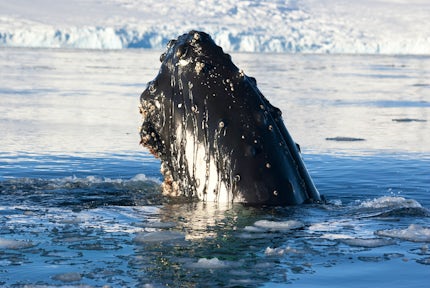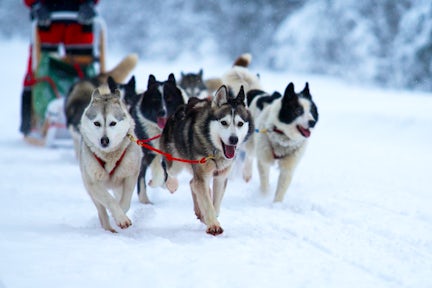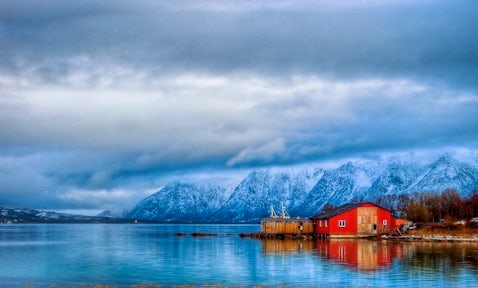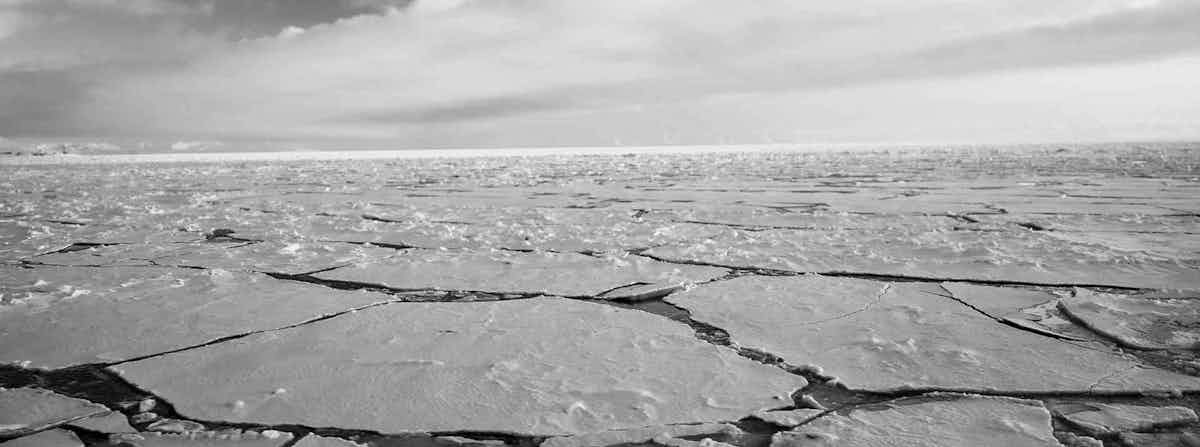Weather and Seasons in The Arctic
The weather in The Arctic changes vastly, depending on the time of year that you visit.
During the early summer (Late May-June), the sea ice begins to retreat, making visiting Inuit communities more practical. It is also the time of year when wildlife begins to really flourish, with more than two hundred local species of flower blooming at this time.
July is considered high summer in the Arctic, and supplies the local regions with midnight sun, and nearly constant daylight. This is also the key time for large whale populations to feed (most notably bowhead and belugas) as well as a time of year which boasts lots of polar bear activity. In Canada and Greenland, large glaciers and icebergs are at their most majestic, and provide the picturesque landscapes that are exemplary of The Arctic.
The late summer (August - September) boasts the incredible raw beauty of the Aurora Borealis in the higher northern latitudes which are available to visit. At the same time, Greenlandic tundra paints itself autumnal, with crisp browns and mustard yellows scattering the scene. The short absence of ice makes travelling through the historic Northwest Passage possible, and allows us to imagine the trials that Franklin and Parry must have endured during their pioneering expeditions.
For further information please visit any of our month pages.
Arctic Guide
The Arctic is so vast and diverse that one of the biggest challenges is knowing where to begin. Our exclusive guide will help you get started with your travel plans.
How to get to The Arctic
Getting to The Arctic can be complicated as there are multiple entry points to choose from, but quite a limited number of actual routes for the size of the region. Due to the distances and logistics involved, most people fly to the Arctic, however you can also get there by boat or even car.
Longyearbyen on Svalbard is the most northerly airport to receive daily scheduled flights, making it arguably the most accessible place in the High Arctic.
Other parts of the Arctic, notably the Canadian Arctic, aren’t so well served by commercial airlines and have to rely on expensive charter flights.
To get to Greenland you need to fly via Copenhagen, Denmark or Iceland.

Guide to Wildlife
The North boasts some of the most varied and impressive wildlife that exists on Earth. With a vast collection of whale species (e.g. Beluga, Bowhead, Narwhal, Humpback), birds and, let’s not forget, the great white bear, it’d be a shame to miss such an opportunity!

Guide to Arctic history
Despite severe climatic conditions, the Arctic has always attracted people. Current estimates suggest that the first tribes were established in the Far North about 10,000 years ago - the hunters and fishermen being the first native peoples of the Arctic region.
The region was then further developed, particularly in Greenland and the northern Canadian Arctic. This, when coupled with northern migration to the American Arctic 1000 years ago resulted in complete Arctic settlement and establishment of the ancestors of the indigenous peoples who live in this region to this day.


Clouds hang low over the fjords
Later, in the 16th Century the British and French also began to explore the northern regions in search of gold and the hope to establish lucrative whaling companies. Their settlements, which were few in number and were mostly strategic forts and trading points, began to appear in the Arctic and allowed for efficient exportation of furs back into Europe.
More recently, the Soviet government conducted a progressive policy aimed at preserving the languages and cultures of the indigenous peoples. This has proven incredibly important and has proven successful. At present, the Arctic is home to about 4 million people, including the indigenous people of the Far North, such as the: Chuckchi, Nenets, Koi and Selkup to name but a few.
The Arctic now provides us with vital scientific knowledge, gained from work in polar stations and meteorological centres. There are also large and modern cities, such as Tromso, Murmansk and Norilsk which help with access into the region, as well as providing industry to the region.
Books about The Arctic
If you're looking to brush up on your Arctic history, either before or during your trip, we've come up with a few of our favourite books for you to enjoy:
- “This Cold Heaven: Seven Seasons in Greenland” by Gretel Ehrlich - Follow Ehrlich as she slowly discovers the ice covered European beauty that is Greenland. In This Cold Heaven, Ehrlich’s adventure across the country is coupled with its rich history and cultural anthropology, revealing to her readers the secrets of this wonderful island. Highlights include: befriending a polar bear hunter and learning the 23 inuit words for ice.
- “True North: Travels in Arctic Europe” by Gavin Francis - This spectacular piece of travel writing, by the great travelling medic Gavin Francis, strikes the balance between recording his own activity with information on the history and mythology of the region. Francis begins in the Shetland islands, up through the Faroes, to Iceland, Greenland, Svalbard and finally Lapland. Well worth a read!
Documentaries about The Arctic
...and if instead you want something more visual, we’d recommend feasting your eyes on these TV programmes!
- Frozen Planet - This remarkable BBC nature documentary series, narrated by the legendary David Attenborough, won awards when it aired in October 2011. Incredible cinematography and photography of the most remote wildlife in the world is eye candy enough to satisfy even the sweetest travel tooth. 7 episodes long, Frozen Planet gives an accessible but thorough analysis of both polar regions in all of their seasonal glory.

What our customers think of A guide to Arctic travel
Review:
Ready to Book Your Arctic Adventure?
Listen
We'll spend some time listening to your aspirations, then discuss the kind of experience that might suit you.
Match
Next we'll discuss the options, shortlist the best trips for you and present you our impartial recommendations.
Reserve
We'll place a 24 hour hold on your preferred option - without obligation - whilst we talk through the details.
Our team of experts are ready to help you with any questions about a trip to the Arctic.

